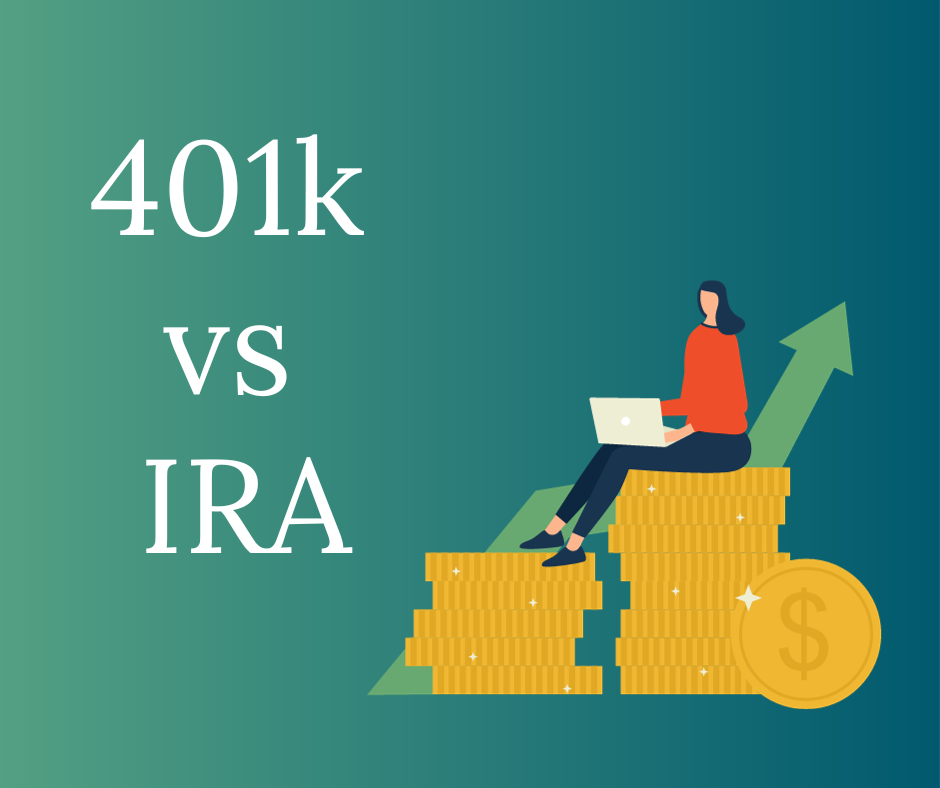Introduction

Retirement planning stands as a critical pillar of financial management that deserves everyone’s attention. It encompasses the practice of saving funds throughout your working years to secure a comfortable retirement.
Two of the most popular retirement vehicles are the 401k and the Individual Retirement Account (IRA). These plans offer an avenue to save for retirement, each with its unique features.
In this article, we will delve into the fundamentals of 401k and IRA retirement plans, explore their pros and cons, highlight their tax advantages, and provide insights on how to make an informed choice between these two options.
Understanding the Basics of 401k and IRA Retirement Plans
1. 401k Retirement Plan:
– A 401k is a retirement plan that enables employees to contribute a portion of their salary into a retirement account.
– Contributions to a 401k are made on a pre-tax basis, meaning they are deducted from your paycheck before taxes are withheld. This reduces your taxable income and allows contributions to grow tax-deferred until withdrawal during retirement.
– Employers may also offer matching contributions, essentially providing free money that enhances your retirement savings.
2. IRA (Individual Retirement Account):
– An IRA is an individual retirement account open to anyone and not tied to a specific employer.
– Traditional IRAs accept pre-tax contributions similar to 401ks, while Roth IRAs receive after-tax contributions. The key distinction lies in how withdrawals are taxed – traditional IRA withdrawals are taxed in retirement, whereas Roth IRA withdrawals are tax-free.
Pros and Cons of 401k and IRA Retirement Plans
401k Advantages:
– Potential for employer matching contributions that significantly boost your savings.
– Contributions are pre-tax, lowering your taxable income and reducing your tax liability.
– Offers a wide range of investment options, facilitating portfolio diversification and the potential for higher returns.
401k Disadvantages:
– Tied to your employer, limiting contributions to those employed by companies offering 401k plans.
– Typically offers a more limited selection of investments compared to IRAs.
– Early withdrawals before age 59 ½ incur a 10% penalty, discouraging access to funds before retirement.

IRA Advantages:
– Flexibility as it’s not tied to an employer, allowing you to open an IRA at any financial institution.
– Roth IRAs offer tax-free withdrawals in retirement, beneficial for those expecting to be in a higher tax bracket in the future.
– More lenient withdrawal rules, permitting penalty-free withdrawals for specific expenses like education or first-time home purchases.
IRA Disadvantages:
– Lower contribution limits compared to 401k plans.
– Traditional IRAs mandate required minimum distributions (RMDs) starting at age 72, requiring annual withdrawals subject to taxation.
How to Choose Between 401k and IRA Retirement Plans
When making a decision between a 401k and an IRA, consider these factors:
1. Personal Financial Goals and Circumstances:
– Evaluate your financial goals, including whether your employer offers a 401k plan with matching contributions, and your expected tax bracket in retirement.
– Traditional 401k or IRA may be suitable if you anticipate a lower tax bracket in retirement, while a Roth IRA may be preferable for those expecting higher taxes in the future.
2. Investment Preferences:
– Consider your investment preferences and the level of control you desire over your investments.
– An IRA provides more control and a broader range of investment options, including stocks, bonds, mutual funds, ETFs, and alternative investments.
Tax Benefits of 401k and IRA Retirement Plans
Both 401k and IRA retirement plans offer valuable tax benefits:
– Tax-Deferred Contributions: Contributions to retirement accounts reduce your taxable income for the year, yielding tax savings.
– Tax-Free Growth: Earnings within retirement accounts grow tax-free, enhancing savings potential.
– Withdrawal Taxation: Keep in mind that while contributions are tax-deferred, withdrawals in retirement are subject to income taxes (except for Roth IRAs).
Investment Options for 401k and IRA Retirement Plans
Both 401k and IRA retirement plans present various investment choices to foster savings growth:
– 401k plans offer investment options based on your employer’s plan, usually including mutual funds and sometimes target-date funds.
– IRAs grant more investment control, permitting you to choose from a wider array of options, including stocks, bonds, mutual funds, ETFs, and alternative investments.
Employer Contributions in 401k Retirement Plans
One of the distinct advantages of a 401k plan is the potential for employer contributions:
– Employers often offer matching contributions or non-elective contributions, enhancing employees’ retirement savings.
– Vesting schedules may apply, determining how much of the employer’s contribution you can retain if you leave the company before a specified time.
Contribution Limits for 401k and IRA Retirement Plans

Both 401k and IRA retirement plans impose annual contribution limits:
– In 2021, the maximum 401k contribution limit is $19,500, with catch-up contributions for those aged 50 and older.
– IRA limits for 2021 are $6,000, with additional catch-up contributions available for older individuals.
Withdrawal Rules for 401k and IRA Retirement Plans
401k and IRA plans have distinct withdrawal rules:
– Generally, penalty-free withdrawals from both plans start at age 59 ½.
– Some exceptions apply, such as early retirement at age 55 or older in 401ks.
– Traditional IRAs mandate required minimum distributions (RMDs) beginning at age 72.
Rolling Over a 401k to an IRA Retirement Plan
There may be instances where transferring a 401k to an IRA is advantageous:
– Rollover offers greater control over investments and access to a broader range of options.
– The process typically involves opening an IRA account, which can be done seamlessly.
Conclusion
In summary, choosing between a 401k and an IRA requires careful consideration of your financial goals, tax preferences, investment outlook, and employment circumstances.
Each option offers unique advantages and limitations, making it essential to align your choice with your individual retirement strategy.